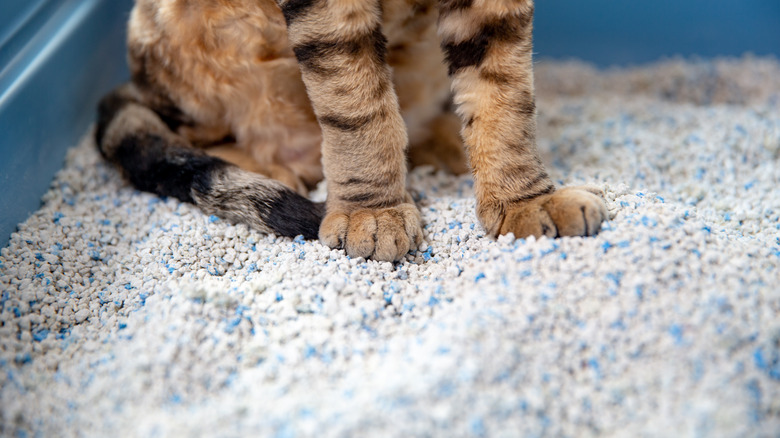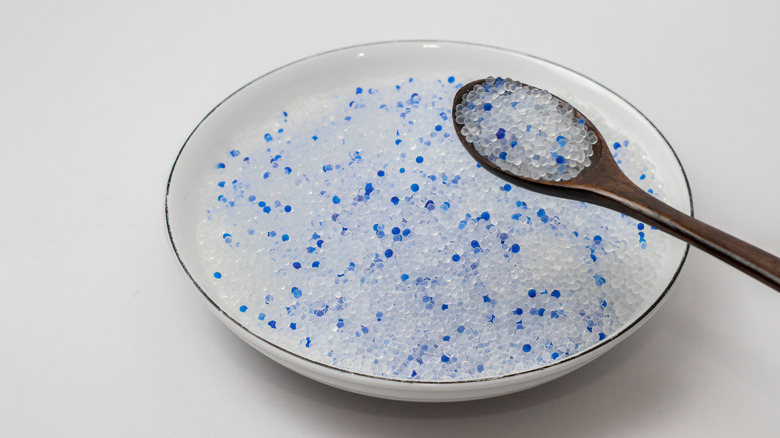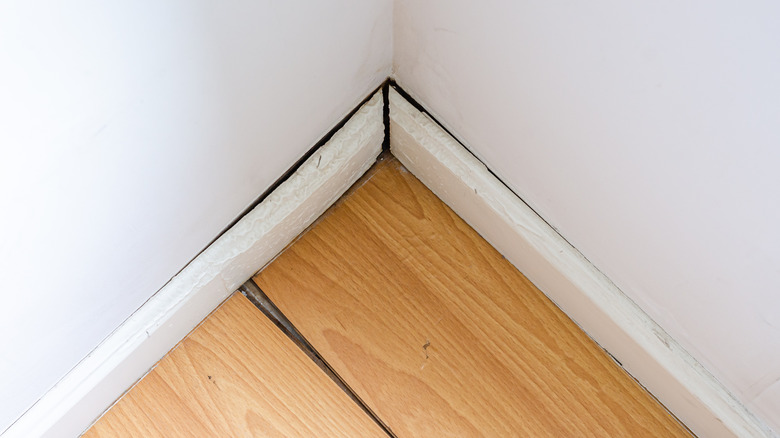Kitty Litter Is The Answer To Reducing Moisture In Your Basement
We may receive a commission on purchases made from links.
Heavy rainfall can bring forth a range of issues. From leaks in the attic to an overloaded sewage system, there are seemingly countless ways that rainwater can cause problems around your house. One of the most common things we see, after some consistent rain, is moisture in our basements. As the soil around and below your home is soaked with rainwater, pressure may cause water to be pushed through cracks in the basement walls and your foundation. When this happens you might notice more humidity, a small flood throughout your basement, or water may simply pool in the lowest parts of your home.
For larger flooding issues, you'll need to invest in a more powerful solution such as installing a sump pump or an electric dehumidifier. However, small amounts of water might be fixed with an item you already have in your home. Cat owners are familiar with the absorbency of kitty litter. The sand-like product is designed to soak up moisture from a cat's business, yet it can really soak up any moisture that it comes in contact with. So, in small spaces, litter is ideal for removing extra moisture and keeping mildew growth at bay.
The best kind of kitty litter for absorbing moisture
Today, there are countless types of kitty litter sold by a variety of brands. Clay, silica gel crystals, and natural alternatives such as pine pellets are among these options. Clay litter is usually seen as the traditional option as it has been the most popular type of litter for some time, but silica gel has been widely adopted by cat owners looking for a cleaner and more eco-friendly option. When it comes to absorbing liquid in your basement, Sodium Bentonite clay-based litter is the cheaper way to go and dust from the product shouldn't be an issue if you choose the right one.
Now that our options have been narrowed down to clay versus silica gel crystals, we still have a lot of brands to choose from. If you own a cat and have a favorite litter already, you might as well use what you have on hand. However, if you don't, we would recommend Dr. Elsey's Precious Cat Ultra Clumping Clay Cat Litter for those leaning toward the clay choice or Fresh Step Crystals Premium Cat Litter if you prefer silica gel crystals. Keep in mind that every brand has different properties. When looking for the right kitty litter for your situation be sure to look into what they are made out of and how much moisture they claim to absorb.
How to use litter to reduce moisture in a room
There are a few different ways to reduce moisture with kitty litter. Usually, pouring the litter into a shallow container of some kind and placing it in the most humid area will do the trick. But, if you prefer not to leave it out, you can add a lid with holes drilled or punched into it to keep it contained. Another option is to put the cat litter in a breathable material, such as a sock, to be hung up and out of the way.
Depending on how much litter you use and how humid your basement is, you'll want to check on your DIY dehumidifier at least two to four times per month. If the litter seems to be wet or clumping together, you'll need to change it out. For extra wet areas or small pools of water, you might also pour a bit of cat litter directly onto the floor for a quick cleanup of the spill. This trick also works inside damp trash cans, refrigerators, and pantries.


